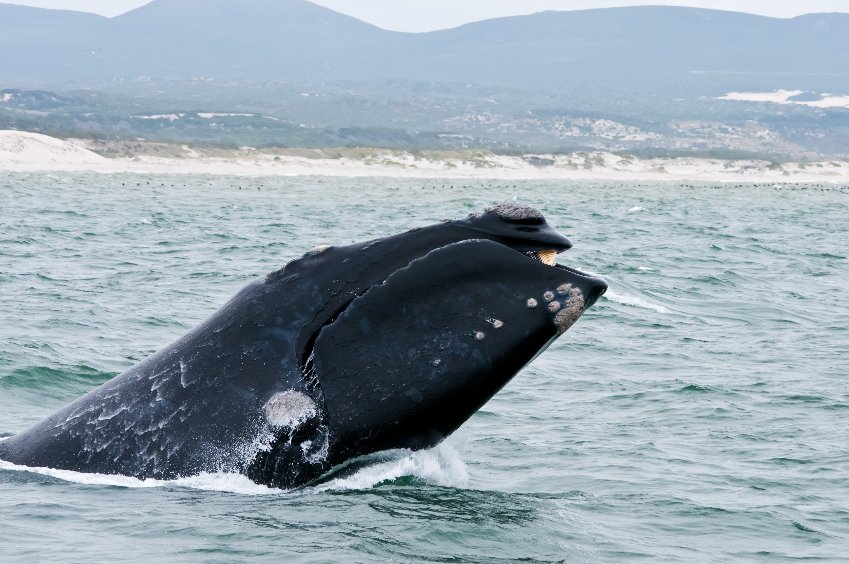The Feds have admitted that offshore wind development can cause the death of whales and other marine mammals, but they refuse actually to assess that threat for any wind facilities. So I here outline what such a study should look like. This sort of study is what they are afraid to do because it would give numbers to the deaths that are likely to occur, species by species.
First off, here is the Feds’ own description of some of the known deadly threats. In this case, the offshore wind activity is driving the monster piles that support the turbine towers, but there are others. The Feds say this in the Draft Environmental Impact Statement for the proposed Empire Wind project off of New York and New Jersey:
“It is possible that pile driving could displace animals into areas with lower habitat quality or higher risk of vessel collision or fisheries interaction. Multiple construction activities within the same calendar year could potentially affect migration, foraging, calving, and individual fitness. The magnitude of impacts would depend upon the locations, duration, and timing of concurrent construction. Such impacts could be long term, of high intensity, and of high exposure level. Generally, the more frequently an individual’s normal behaviors are disrupted or the longer the duration of the disruption, the greater the potential for biologically significant consequences to individual fitness. The potential for biologically significant effects is expected to increase with the number of pile-driving events to which an individual is exposed.”
Empire Wind DEIS v.1, Page 3.15-14, PDF page 372
The federal agencies, in this case, are the Bureau of Ocean Energy Management (BOEM) and NOAA Fisheries (NFMS), who jointly prepare the DEIS. Other agencies also have responsibilities for marine mammals.
My focus here is displacement leading to a higher risk of vessel collision or fisheries interaction, as mentioned in the first DEIS sentence above. This is the obvious case where a whale or other critter is driven by excessive noise into a high-traffic ship lane and killed or into a net, tangled, and drowned. Many proposed wind facilities are located where this is a reasonably likely occurrence.
It is important that the first step in my study design is already being done in great detail. What I describe is a straightforward extension of the present method. For every wind project activity that produces excessive underwater noise, NMFS estimates the number of critters, by species, that will experience unsafe noise levels.
They call this experience of unsafe noise a harassment. For some projects, the number of predicted harassments is hundreds for whales and thousands for smaller protected mammals like dolphins and seals.
How the number of harassments is estimated is pretty technical, but the basic idea is simple enough. First, figure how the excessive noise will be distributed in the ocean. Then given the estimated population density of critters within that noise distribution, calculate the number of animals hit with excessive noise.
As the quote above makes clear, harassment can cause deadly behavior. The Feds do not address this issue, which is simply the likely death rate of harassment. So here is an outline of how it could be done.
Step 1: Harassment
Get or estimate data on critter densities and unsafe noise distributions, both over time. Estimate the number and distribution of likely harassment. This a already being done.
Step 2: Avoidance due to harassment
Given critter density and noise distribution, both over time, derive critter density changes due to noise. The animals will likely flee the unsafe noises and move to adjacent areas, increasing the population density of these.
Step 3: Threat densities
Get or estimate threat densities and distributions over time. Threat densities include things like ship traffic numbers, perhaps by vessel type and speed, net locations, etc. Detailed ship traffic data is available for some sites.
Step 4: Death increases
Derive increases in deadly threat exposure due to avoidance. An increased critter density in a high-threat area implies an increased likelihood of mortality.
Step 5: Refinement
Factor in adverse effects accompanying avoidance, such as deafness, panic, etc.
That is the study outline. If they can estimate harassment numbers by species, they can readily go on to estimate the deadly consequences of harassment using the same density-based methods. This can also be done for migration, foraging, and the other obvious impacts listed in the DEIS quote above.
The research question is simple: What is the mortality rate of harassment for a given offshore wind project?
The Feds must answer that mortality rate question before a project’s environmental impact assessment is complete. They should also assess multiple projects, as discussed in the DEIS quote above.
